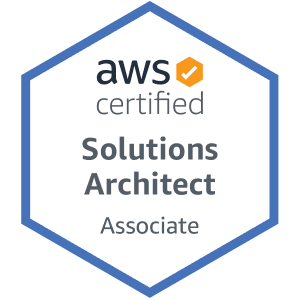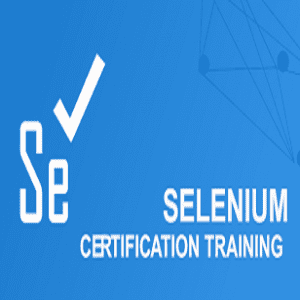Who takes the exam?
Pearson Vue is the authorized provider of exams for TOGAF 9.2, IT4IT and ArchiMate certification. It hosts exams worldwide through a network of test centers.
Will I get exam voucher?
This course comes with a FREE voucher to let you avoid the TOGAF certification exam fees. It must be used within 12 months of being issued. The course also makes students for a FREE resit via Exam Pledge.
What is student workbook?
CertAdda’s TOGAF 9.2 Certified course features a student workbook, available as a PDF download. The student can use this workbook to make notes as they progress through the course. A completed workbook makes a great study guide for exam preparation. Either print out the workbook and make hand-written entries or (if you have Adobe Reader 11 or later) make notes directly into the PDF.
Will I get any mock exams?
Two mock exams and a mock exam simulator with answers are included within the course. Students are encouraged to make good use of them in order to prepare for the official exam.
How will I get my exam voucher?
When you are ready to use your free exam voucher, simply contact support@goodelearning.com. Exam voucher requests are typically processed within 2 working days but please allow up to 5. Students must request their exam voucher within the course access period which starts from the date of purchase.
How many questions are in TOGAF Level-1 exam?
This is a multiple choice exam consisting of 40 questions
What is the time limit in TOGAF Level-1 exam?
There is a time limit of 60 minutes to complete the exam
Is the TOGAF Level-1 exam open book or closed book?
The exam is closed-book – you cannot make use of any resources or materials during the exam
What is the passing marks for TOGAF Level-1 exam?
The pass mark for the exam is 55%: you must score at least 22 points out of a maximum of 40
Will I get any extra time for my TOGAF Level-1 exam?
In countries where English is a second language, 30 minutes of additional time will be allocated. The total time, in this case, will be 90 minutes
How many questions are in TOGAF Level-2 exam?
This is an open book examination consisting of 8 questions
What is the time limit in TOGAF Level-2 exam?
There is a time limit of 90 minutes to complete the exam
What is the marking scheme in TOGAF Level-2 exam?
Each correct answer scores 5 points, Each second-best answer scores 3 points, Each third-best answer scores 1 point
What is the passing marks for TOGAF Level-2 exam?
The pass mark for the exam is 60%: you must get 24 out of 40 questions correct
What is enterprise architecture?
‘Enterprise architecture’ involves creating ‘architectures’ of IT infrastructures, including how they are put together and how different elements interact. This provides a clearer sense of perspective which organizations can use to align architectures with business goals. This can be essential for supporting large-scale enterprise transformation, IT growth, and organization-wide change.
What is TOGAF?
‘The Open Group Architecture Framework’ is a leading enterprise architecture framework. It provides a systematic approach for designing, building, and adapting enterprise architectures – one that has been successfully applied across countless organizations and industries around the world.
Who owns the TOGAF standard?
The Open Group works with customers and suppliers of technology products and services, and with consortia and other standards organizations to capture, clarify, and integrate current and emerging requirements, establish standards and policies, and share best practices.
What kind of organization is the TOGAF standard suitable for?
The TOGAF standard is used by organizations of virtually every size, sector and industry. Enterprise architecture is becoming a much more common practice for maximizing efficiency and managing complex business strategies, and this has only led to an increase in demand for TOGAF certified architects. However, while any organization can use the TOGAF standard, it takes a certified architect to use it properly.
What does the TOGAF certification path look like?
Students begin with TOGAF Foundation (Level 1). Passing this allows them to proceed to the TOGAF Certified (Level 2) exam. There are no prerequisites for taking the TOGAF Business Architecture (BA) exam. The Essentials and Implementation courses can also be taken without passing an exam.
How much is a TOGAF certification worth?
According to Payscale, TOGAF-certified professionals such as enterprise, solutions, and technical architects can earn between $85,000 and $202,000 (or £39,000 and £202,000). TOGAF-certified architects can also find work in various industries all over the world.
In what countries is the TOGAF standard popular?
The TOGAF framework is popular all over the world. You can find certified professionals in over 130 countries, and TOGAF architects can find work almost anywhere. That being said, there are certainly several regions where the TOGAF standard has more of a presence. The majority of TOGAF certifications are earned in the UK, USA, India, the Netherlands and Australia.
How can TOGAF benefit businesses?
The clarity offered by TOGAF helps businesses to pursue enterprise transformation, IT growth, and organization-wide change with optimized efficiency and focus. It also helps users to ensure that their IT infrastructures are fully aligned with essential business goals.
What do I need to know about the TOGAF exams?
The TOGAF Foundation exam is closed-book, lasts 60 minutes, and features 40 questions. Students who do not have English as their native language can be allocated 30 minutes of extra time. The pass mark is 55%. The TOGAF Certified exam has eight questions, lasts 90 minutes, and has a pass mark of 60%.







